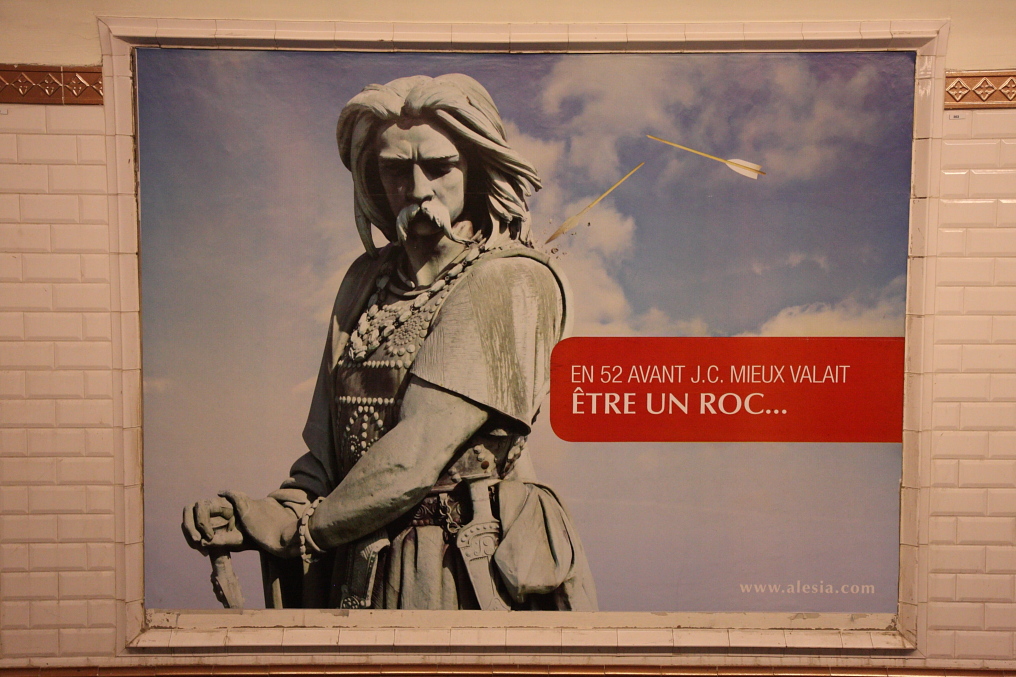
Anyone who thinks the modern French are not still obsessed by the tragiheroic figure of Vercingetorix ought to think again. This is the guy who rallied the Gallic tribes against Julius Caesar–yes, they were a bunch of tribes who, like Native Americans, tried to resist the Roman invasion.
Vercingetorix's last stand actually started at the Gallic stronghold of Bibracte, in the heartland of Burgundy, now home to the Museum of Celtic Civilization, and it ended at Alesia, north of Bibracte but still in today's Burgundy and now a theme park.

When we walked across France we spent about 3 weeks crossing the territory of the main Gallic tribes, and saw the battlegrounds, and the reconstructed citadels of Gaul. If you're curious to know how the French pronounce the name of the ancient Gallic warior-king, click here to listen to Vercingetorix as spoken by many contemporary ancestor-worshippers we met.

Luckily touring here is not just about history. Climb to the top of Mont Beuvray–the region's tallest mountain, sacred to the Gauls, and site of Bibracte–you'll discover plenty to admire and think about. (There's also the "museum," really a propaganda bureau, with neat waxwork dummies and lots of stuff about the "civilization" of the Celts).
In a sacred grove of old beech trees water wells from seven springs. Towering, centuries-old trees sway. The view from leafy Bibracte's summit takes in forests, lakes, pastures, stone-built villages and cloud-snagging mountaintops far off to the south. Somnolence would seem guaranteed. But no: the prospect pulses with 2,000+ years of blood, mystery and bizarre, only-in-France nationalistic lore.
Bibracte? No, you won't find it on a modern map. It is or was the most celebrated "lost city" of the Celts, the pre-Roman inhabitants of Gaul. Here, beneath the contorted beech trees, Julius Caesar returned from his victory at Alesia to dictate the perennial bestseller The Conquest of Gaul, etched into tablets in the year 52 B.C.
When Alison Harris and I crossed France (I tell the story in Paris to the Pyrenees: A Skeptic Pilgrim Walks the Way of Saint James), we spent a whole day here, enchanted, baffled, amused by the nutty extremes of French nationalism, and the seemingly boundless talent many French have for rewriting and reinterpreting history in their favor.
Bibracte, lost? That's the operative word. Caesar drubbed the Celts, marched Vercingetorix to Rome, and imprisoned then murdered him before cheering crowds. End of story? No, never. This is Gaul, meaning modern France. The past lives on. And on.
Listen to Vercingetorix as spoken by many proud French men and women we encountered.
Read the rest of this article.
A riot of evocative rubble and vegetation, the remains of Bibracte spread atop Mount Beuvray. Happily you can geo-locate this handsome hill: at 2,500 feet it is one of the highest in Burgundy, sited in an unsung region west of France's finest vineyards in the Côte d'Or keep reading on Gadling.com.


